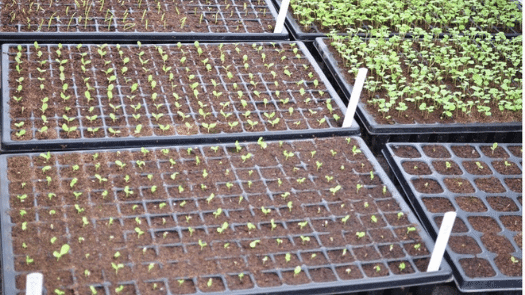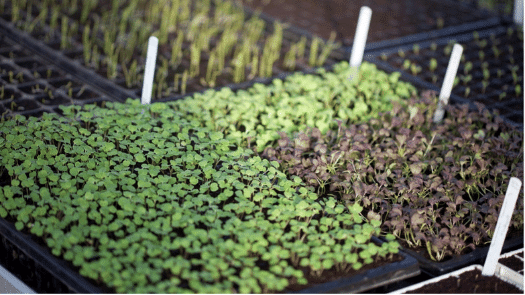Home » Basic seed sowing guide

Basic seed sowing guide
-
Raising plants from seed is a cost-effective and straightforward way to fill your garden with fruit, veg, and flowers. While many seeds can be sown where they will be grown, others benefit from being started indoors. Sowing indoors also means that you can start growing earlier in the season, when outdoor conditions may still be unfavourable. Seed packets will come with instructions that should be followed, but there are general principles that apply. We’ve gathered them here to help you get started!
Sowing
Fill a container with compost. Any well-draining vessel will do, including yoghurt pots or take-away containers with holes drilled in. Water and firm the compost before sprinkling the seeds. Try to leave 2-3cm between seeds, though some seeds are too small to allow such precision! Cover with a thin layer of compost (usually the depth of the seed size will do). Leave the containers in a warm, well-lit spot and water enough to keep the compost moist.Pricking out
Once the seedlings have grown their “true leaves” (the second set to emerge) they can be pricked out. Pricking out involves moving the seedlings to a container where they’ll have more space to grow. Handle the seedlings by their leaves rather than their stems- a plant with damaged leaves will have a better chance of survival than one with a damaged stem! Plant seedlings about 5cm apart and bury up to the base of the first leaves.Potting on or planting out
After a few weeks, your seedlings will be big enough and strong enough to be moved on to their final location. This could be a pot or outdoors, if weather conditions allow. If planting outdoors, it is a good idea to ‘harden off’ the plants by gradually increasing their time outside.Tips and advice:
•Try to use homemade or peat-free compost which is better for the environment. Seed compost can be bought, though most seeds will germinate in standard, multipurpose compost. •After sowing, covering the pot with clear plastic or glass until germination can speed up the process. •Regular, successional sowing of vegetable seeds will give a steady supply throughout the season.




